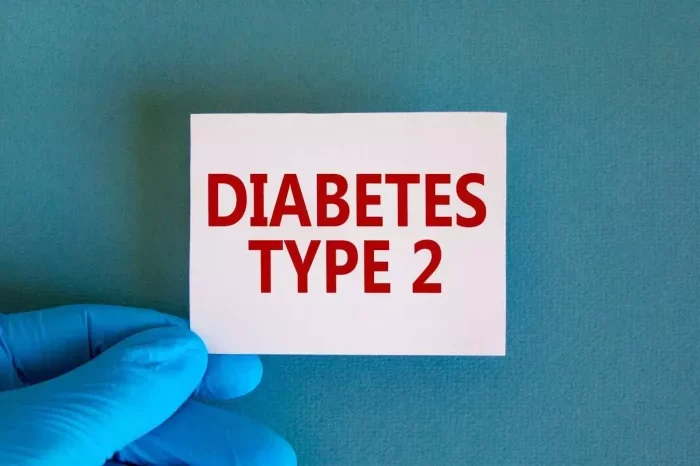Type 1 diabetes is a chronic condition characterized by the autoimmune destruction of insulin-producing beta cells in the pancreas. This results in a lack of insulin, a hormone critical for regulating blood sugar levels. Unlike Type 2 diabetes, which is often associated with lifestyle factors and tends to develop later in life, Type 1 diabetes typically manifests earlier in life. Understanding the average age of diagnosis for Type 1 diabetes provides valuable insights into the disease’s epidemiology, risk factors, and the impact on patients and families.
Epidemiology of Type 1 Diabetes
Type 1 diabetes (T1D) is less common than Type 2 diabetes but is a significant concern due to its early onset and lifelong management requirements. According to the American Diabetes Association, T1D accounts for approximately 5-10% of all diabetes cases. The incidence of T1D varies globally, with higher rates observed in countries such as Finland and Sweden compared to regions like Asia and Africa.
Average Age of Diagnosis
1. Childhood Onset
The majority of Type 1 diabetes cases are diagnosed in children and adolescents. The average age of diagnosis in children is typically between 4 and 14 years. However, T1D can be diagnosed at any age, from infancy to young adulthood. The peak incidence is observed between ages 5 and 7, with a secondary peak in adolescence around ages 10 to 14.
Early Childhood (Under 5 Years): In very young children, Type 1 diabetes often presents with rapid onset and severe symptoms. This age group may experience symptoms such as frequent urination, excessive thirst, and unexplained weight loss. Diagnosis at this stage may be challenging due to the overlap of symptoms with other illnesses and the relative rarity of T1D in infants and toddlers.
School-Age Children (5-14 Years): The majority of T1D cases are diagnosed during this period. School-age children often present with classic symptoms of hyperglycemia, including polydipsia, polyuria, and fatigue. This age group is also more likely to experience diabetic ketoacidosis (DKA) at diagnosis, a serious complication of untreated diabetes.
Adolescents (15-19 Years): During adolescence, the incidence of Type 1 diabetes continues to rise. The hormonal changes associated with puberty can impact blood glucose control, making diabetes management more challenging. The psychological and social aspects of living with T1D during this developmental stage can also affect adherence to treatment and overall well-being.
2. Adult Onset
Although less common, Type 1 diabetes can be diagnosed in adults. This form of T1D is sometimes referred to as Latent Autoimmune Diabetes in Adults (LADA) or Type 1.5 diabetes. Adults diagnosed with T1D are often older than the typical childhood-onset patients, with diagnoses occurring in their 20s, 30s, or even 40s.
Early-Onset Type 1 Diabetes: In adults with early-onset T1D, the disease may have gone undiagnosed for years. These individuals often present with symptoms similar to those seen in children but may have adapted to their symptoms or mistaken them for other conditions.
Late-Onset Type 1 Diabetes: Late-onset T1D is characterized by the gradual development of autoimmune diabetes in adults. Unlike classic T1D, which presents with rapid onset, late-onset T1D may develop over several months or years. The clinical presentation may resemble Type 2 diabetes, with symptoms such as gradual weight loss and fatigue. However, autoimmune markers and insulin dependency differentiate it from Type 2 diabetes.
Genetic and Environmental Factors Influencing Age of Onset
Several factors contribute to the variability in the age of onset for Type 1 diabetes. Understanding these factors can help elucidate why some individuals develop T1D at a young age, while others may be diagnosed later in life.
1. Genetic Factors
Genetics play a crucial role in the development of Type 1 diabetes. Specific genes, particularly those in the HLA (human leukocyte antigen) region, are associated with an increased risk of developing T1D. Children with a family history of T1D are at a higher risk of developing the condition, and the age of onset can be influenced by the presence of these genetic markers.
HLA Genes: The HLA class II genes (HLA-DR and HLA-DQ) are known to influence susceptibility to Type 1 diabetes. Variations in these genes can affect the timing of disease onset and the likelihood of developing autoimmune diabetes.
Other Genetic Markers: In addition to HLA genes, other genetic factors and susceptibility loci have been identified that may influence the age of onset. Research into these genetic markers continues to provide insights into the complex interplay between genetics and disease development.
2. Environmental Factors
Environmental factors, such as viral infections, diet, and autoimmune triggers, also play a role in the development of Type 1 diabetes. These factors may interact with genetic predispositions to influence the age at which symptoms first appear.
Viral Infections: Certain viral infections, such as enteroviruses, have been implicated in the development of Type 1 diabetes. These infections may trigger an autoimmune response that targets pancreatic beta cells, leading to the onset of diabetes. The timing of such infections can impact the age of diagnosis.
Dietary Factors: Dietary factors, such as early introduction of cow’s milk or gluten, have been studied for their potential role in the development of Type 1 diabetes. However, the evidence is not yet conclusive, and more research is needed to understand how these factors might influence the age of onset.
Autoimmune Triggers: Autoimmune triggers, including the presence of other autoimmune disorders, can contribute to the development of Type 1 diabetes. Individuals with a personal or family history of autoimmune diseases may experience an earlier onset of T1D.
Implications of Age of Onset
The age at which Type 1 diabetes is diagnosed can have significant implications for the individual, their family, and their healthcare management. Understanding these implications helps tailor treatment and support strategies to address the unique needs of different age groups.
1. Impact on Children and Families
For families with young children diagnosed with Type 1 diabetes, the diagnosis can be overwhelming and life-changing. Managing diabetes in young children requires significant lifestyle adjustments, including dietary changes, blood glucose monitoring, and insulin administration. Parents and caregivers must navigate the complexities of diabetes management while also supporting their child’s emotional and psychological well-being.
School and Social Adjustments: Children with Type 1 diabetes may face challenges related to school and social activities. Parents need to work closely with school staff to ensure that appropriate accommodations are in place and that the child receives the support they need.
Long-Term Outlook: Early diagnosis of Type 1 diabetes requires a lifelong commitment to diabetes management. The long-term outlook for children with T1D involves ongoing monitoring, regular medical check-ups, and education to prevent complications and maintain optimal blood glucose control.
2. Adolescent and Young Adult Challenges
Adolescents and young adults with Type 1 diabetes face unique challenges related to puberty, independence, and transitioning to adult care. The hormonal changes of adolescence can impact blood sugar levels and complicate diabetes management.
Transition to Adult Care: Transitioning from pediatric to adult diabetes care can be a complex process. Adolescents and young adults must learn to manage their diabetes independently while also adapting to new healthcare providers and treatment approaches.
Emotional and Psychological Support: The emotional and psychological aspects of living with Type 1 diabetes during adolescence can be significant. Support from healthcare providers, family, and peers is essential in addressing issues related to self-esteem, body image, and mental health.
3. Late-Onset Type 1 Diabetes
Individuals diagnosed with Type 1 diabetes later in life may face different challenges compared to those diagnosed in childhood. Late-onset T1D can present with atypical symptoms and may be mistaken for Type 2 diabetes. Accurate diagnosis and appropriate treatment are crucial for managing the condition effectively.
Misdiagnosis and Treatment: Late-onset T1D is often misdiagnosed as Type 2 diabetes, leading to delays in appropriate treatment. Accurate diagnosis and differentiation between Type 1 and Type 2 diabetes are essential for initiating the correct management strategies.
Management Considerations: Late-onset T1D may require adjustments in treatment approaches, including insulin therapy and blood glucose monitoring. Healthcare providers must consider the individual’s overall health, comorbidities, and lifestyle when developing a treatment plan.
See also: What Happens to the Body During Hypoglycemia?
Conclusion
Type 1 diabetes is a complex and challenging condition with varying age of onset. While the majority of cases are diagnosed in children and adolescents, the disease can also present in adulthood. Understanding the average age of diagnosis and the factors influencing the age of onset provides valuable insights into the epidemiology and management of Type 1 diabetes.
Early diagnosis and effective management are crucial for optimizing health outcomes and improving the quality of life for individuals with Type 1 diabetes. Whether diagnosed in childhood or adulthood, a comprehensive approach to diabetes care, including medical treatment, lifestyle adjustments, and emotional support, is essential for achieving long-term success and well-being.
Related topics:
What Are the Warning Signs of Type 1 Diabetes?


























